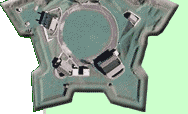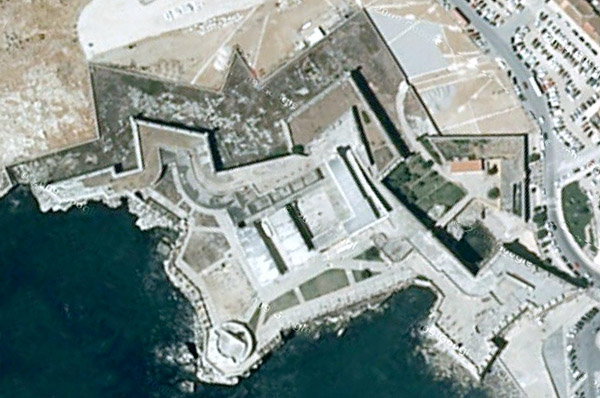
 |
 |
Fortaleza de Peniche Peniche, Portugal |
 |
 |
 |
 |
 |
||
 |
Construction on Peniche's Fortress, which was intended to protect the city's port from pirates and other evildoers, began in 1557 at the order of Portugal's King John III (1502-1557). The Fortress wasn't completed until the reign of King John IV (1603-1656) in 1645, having been interrupted for several decades by Portugal's union with Spain, brought about by Spanish King Philip II (1527-1598)'s desire to...y'know, be violently unified with Portugal. King John IV considered the sea to be the "main key to Portugal," which seems odd, considering his country had only just managed to shove Spain back over its borders after over fifty years of struggle...but one can appreciate his desire to protect his ports from nasties. Peniche's Fortress remained an important military position for the next 250 years. In 1897 the fort was used to house Boer refugees, displaced by their ongoing war with the British in South Africa. During the First World War (1914-1918), German and Austrian POWs were incarcerated at the Fortaleza. The fort in question was named a Portuguese National Monument in 1938. 'Twas during Antonio Salazar (1889-1970)'s Estado Novo, lasting from the 1930's to the 1970's, that the Fortress of Peniche fulfilled its most historically awkward role. Authoritarian regimes being what they are, lots of prison cells were needed for communists, socialists, liberals and people who didn't pronounce "Salazar" in the desired fashion. The Fortaleza served in this manner from 1939 until 1974, when the liberal Salazar-mispronouncers managed a bloodless military coup, the Carnation Revolution, that paved the way for democracy. One of the Estado Novo's aims was to desperately cling to Portugal's overseas empire, despite the rest of the world pretty much moving on from such silliness. The Carnation Revolution also did away with the remainders of this empire, causing a flood of Portuguese folks coming back from the last Portuguese colonies in Mozambique and Angola in 1974. Fortaleza Peniche was drafted back into service to house some of these refugees. In 1983 the Fortaleza was reopened as the City Museum, incorporating plenty of exhibits from the fort's days as a prison, but with other artifacts from Peniche's history. Today the fort and museum are open to the public year 'round.  | |
 |
||
|
|
|||||||
Info Source 1
Info Source 2
Info Source 3
Info Source 4 Info Source 5 Info Source 6 Info Source 7 Info Source 8 Info Source 9 Info Source 10 Thanks to Google Maps for the image! ©2010 starforts.com |
 |